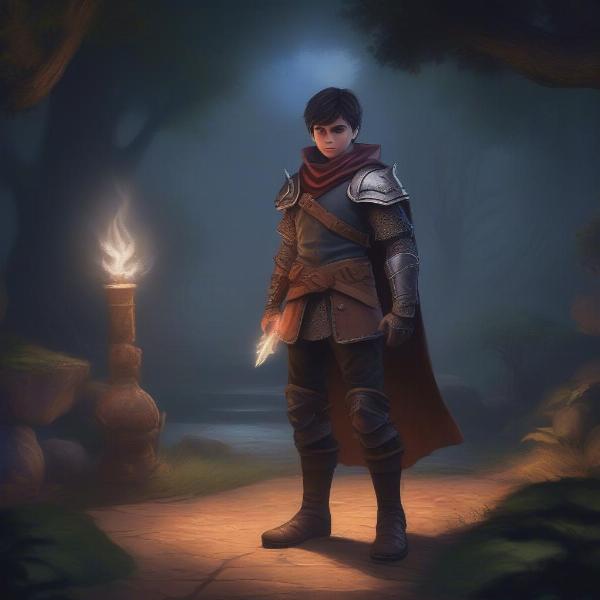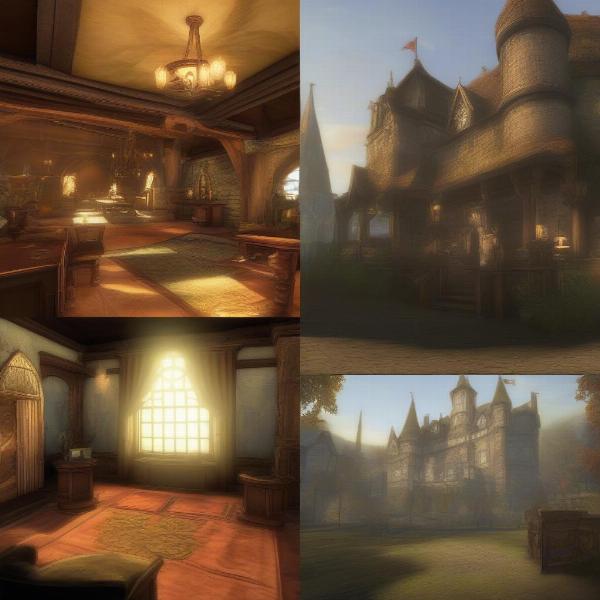The Fable series, a beloved collection of action RPGs, has captivated players with its unique blend of humor, morality choices, and British-inspired fantasy. Here at SupremeDuelist.blog, we often get asked, “Which Is The Best Fable Game?” This question isn’t straightforward, as each entry offers a distinct experience, contributing to the series’ enduring legacy. We’ll explore the nuances of each main installment, helping you decide which adventure in Albion best suits your taste.
Determining the “best” Fable game is subjective, depending on individual preferences for gameplay mechanics, story, and world-building. This article will delve into the specific strengths and weaknesses of Fable, Fable II, and Fable III, while also considering other entries. By understanding what makes each game unique, we aim to provide a clear perspective on which game might be considered the pinnacle of the series for different players.
The Original Fable: A Charming Beginning
Fable, released in 2004, introduced us to the land of Albion and a hero’s journey shaped by choices. This first installment established the core gameplay mechanics of the series – melee combat, ranged attacks, magic, and a morality system that affected your appearance and interactions with the world. The story, while somewhat linear, was engaging and presented a classic “chosen one” narrative with a twist.
- Key Features:
- The defining morality system.
- Introduction to the iconic Albion setting.
- Simple but effective combat.
- A compelling hero’s journey.
The game’s charming atmosphere, memorable characters like Whisper and Maze, and the promise of significant consequences from your actions, made Fable a standout title in its era. However, its limitations, particularly in terms of customization and world exploration compared to later entries, are now apparent.
 Fable hero journey, classic good versus evil, with a young hero rising up
Fable hero journey, classic good versus evil, with a young hero rising up
What was innovative about the first Fable game?
Fable’s innovation stemmed from its ambitious morality system, which dynamically affected the hero’s appearance and the world around him, presenting players with tangible results from their good or evil deeds. This level of influence and consequence was relatively groundbreaking in role-playing games of that time.
Fable II: Expanding the Legend
Fable II, released in 2008, significantly expanded upon the original’s foundation, offering a more open world, improved combat, and a more nuanced morality system. It introduced the concept of “family,” letting players marry, have children, and manage a homestead. The story is set 500 years after the first game, providing a fresh yet familiar experience.
- Key Features:
- More open and explorable world.
- Improved combat system.
- Deeper morality system with more complex choices.
- The introduction of family and property management.
According to game historian, Dr. Eleanor Vance, “Fable II’s success lies in its ability to make player choices feel consequential on a more personal level. The introduction of family and the ability to own property made the game feel more lived-in and the player’s impact more significant.” The improvements in combat and customization options also greatly contributed to its popularity. Fable II is often cited as a favorite among fans of the series for these advancements.
What kind of choices do you make in Fable II?
In Fable II, players make significant moral choices throughout the game that impact their character’s alignment with good or evil. Choices range from saving people from bandits to demolishing entire towns for profit. The ramifications of these choices extend beyond the character’s appearance to influence interactions and the game’s ending.
Fable III: Rebellion and Rule
Fable III, released in 2010, took the series in a different direction, focusing on rebellion and leadership. Players begin as a prince or princess, then transition to becoming a revolutionary, and eventually, the ruler of Albion. While it offered unique ideas, such as ruling the kingdom and dealing with political and economic decisions, it is often considered the most divisive entry in the main series.
- Key Features:
- Focus on political and economic decisions.
- Unique gameplay mechanic of ruling as monarch.
- More detailed world design.
- A narrative centered on leadership and power.
Some players praise its attempt to innovate the series’ formula by introducing complex governmental choices. However, others criticized its simplification of combat mechanics and the somewhat disjointed nature of the ruler simulation aspects.
 Fable 3 royal throne room, with player character making decisions in the kingdom
Fable 3 royal throne room, with player character making decisions in the kingdom
How does Fable III differ from other Fable games?
Fable III differentiates itself by shifting the gameplay focus from personal heroics to ruling an entire kingdom. It allows players to make crucial political and economic decisions that affect the entire world of Albion, a unique feature not found in the other mainline entries.
Other Fable Games and Spinoffs
While the core trilogy is often the focus of discussion, it’s important to acknowledge other Fable games. Fable: The Lost Chapters is an enhanced version of the original, adding more content and quests. Fable Heroes and Fable: The Journey explored different gameplay styles, but didn’t resonate with fans as much as the main series.
Are there plans for a new Fable game?
Yes, a new Fable game is currently in development by Playground Games. The game is a reboot of the series, and promises to bring new adventures and classic Fable charm to the next generation of gamers. The release date is still to be announced.
Which Fable Game is Truly the “Best”?
The question of “which is the best Fable game” ultimately comes down to personal preference. Here’s a brief breakdown to help you decide:
- Fable (2004): Best for those who appreciate a classic RPG with a straightforward story and a foundational morality system.
- Fable II (2008): Often seen as the peak of the series, with its improved mechanics, open world, and the addition of family and property ownership.
- Fable III (2010): A unique experience for players who enjoy political simulation and seeing the consequences of their ruling decisions on a kingdom.
For many fans, Fable II stands out due to its open world and the integration of the morality system into a richer narrative. As game design professor, Alistair Finch, notes, “Fable II refined the ideas introduced in the first game, making player choices more impactful and the overall experience more immersive.” But Fable 1 and 3 have also a loyal fan base that value their own unique features. Ultimately, each game offers its unique advantages.
 A comparative collage of the three main Fable games showcasing different visual styles and gameplay
A comparative collage of the three main Fable games showcasing different visual styles and gameplay
Which Fable Game has the best story?
While each game tells a compelling story, Fable II is often praised for having the most engaging narrative. Its focus on personal stakes, combined with the overarching villain and a deeper moral system, makes the story feel particularly impactful.
Conclusion
Choosing the “best” Fable game is a subjective exercise. While each title offers something unique, Fable II’s improvements in gameplay, story, and world-building often place it at the top of many fans’ lists. However, each entry has its own strengths and appeals to different types of players. Whether you are new to the series or a seasoned fan, exploring the different entries will provide a rich and rewarding experience of Albion. Remember to check SupremeDuelist.blog for more in-depth analysis on gaming content, ensuring you get the most out of your gaming journey. So, which Fable adventure will you embark on?
Leave a Reply